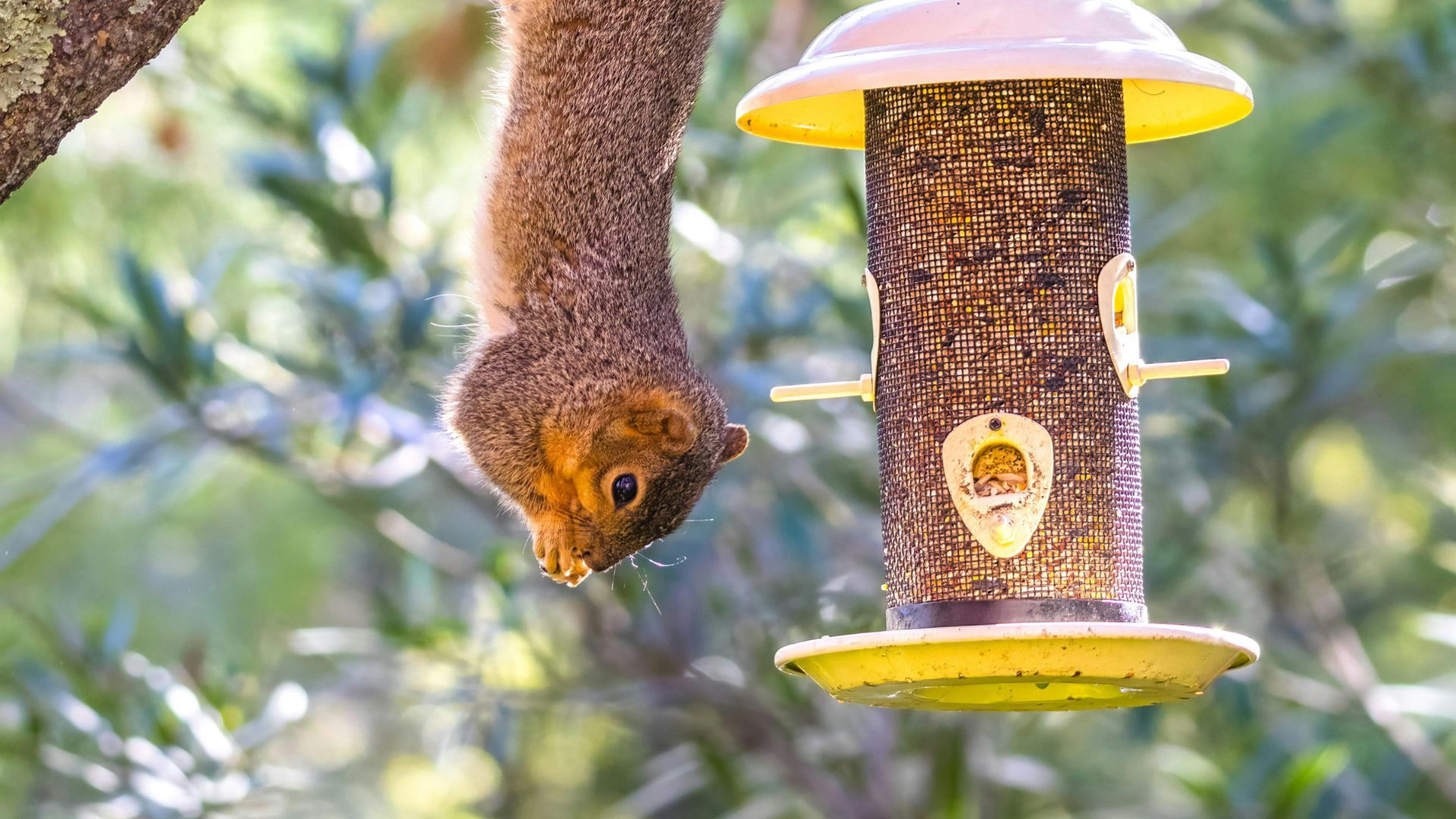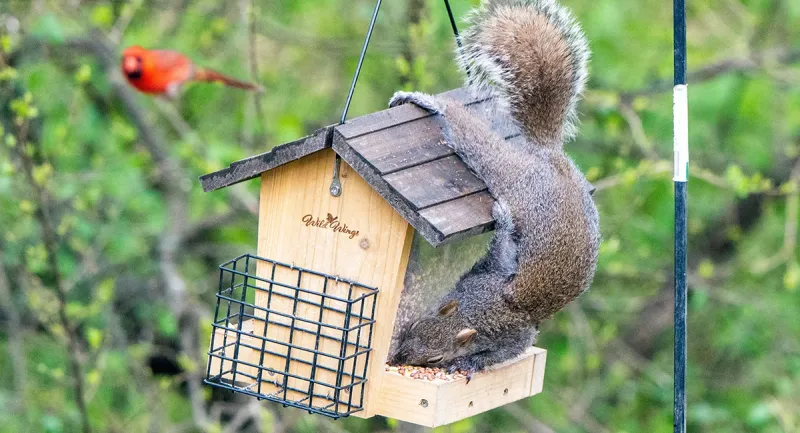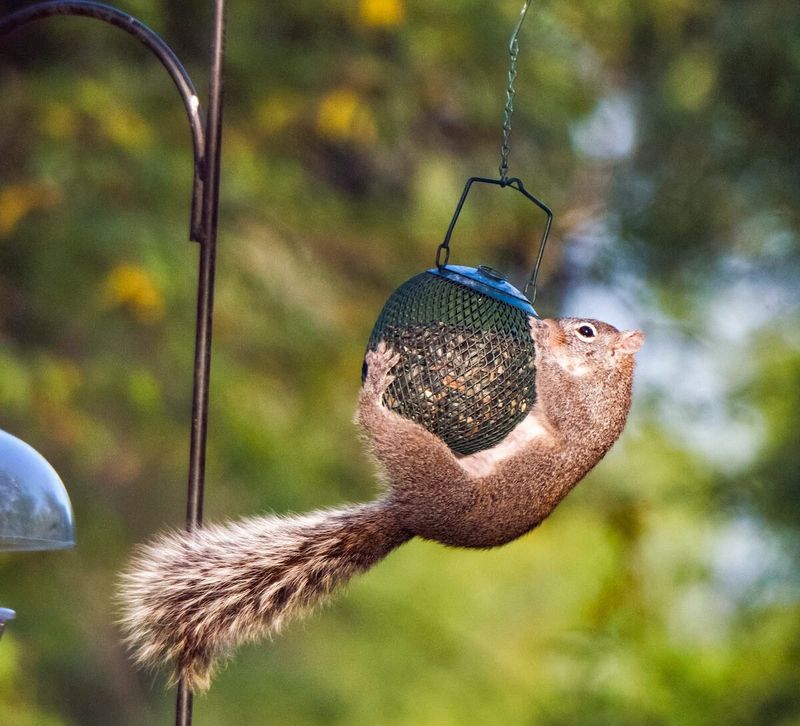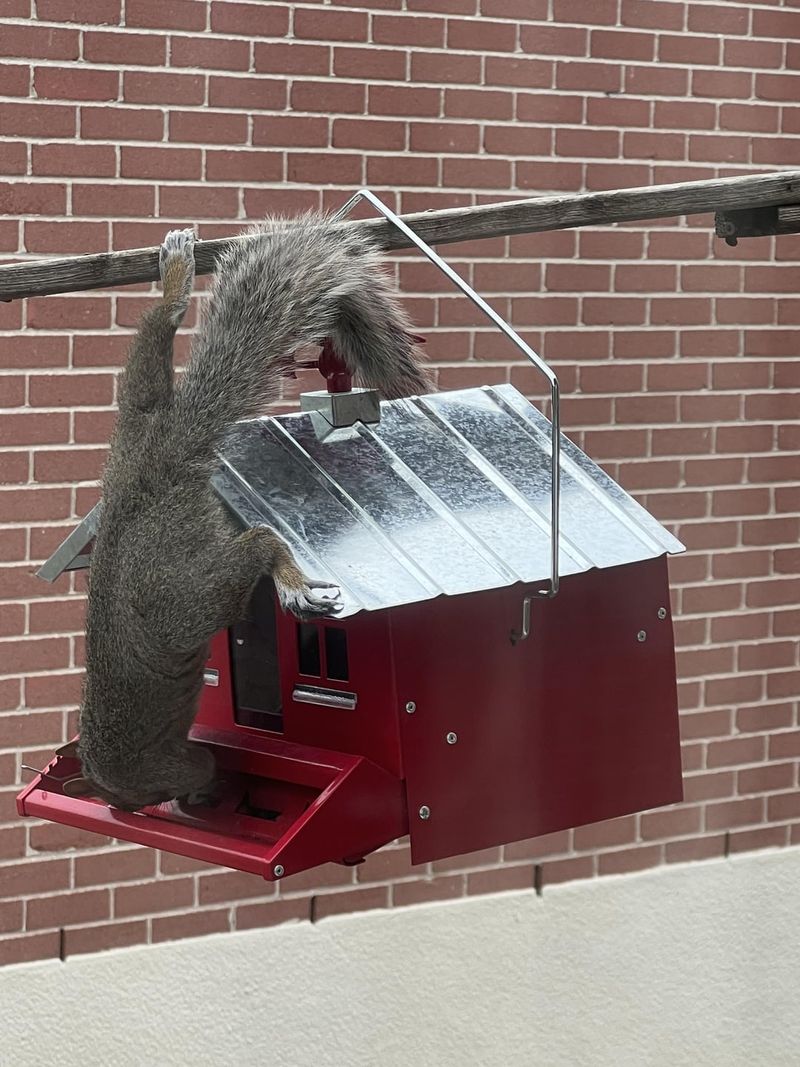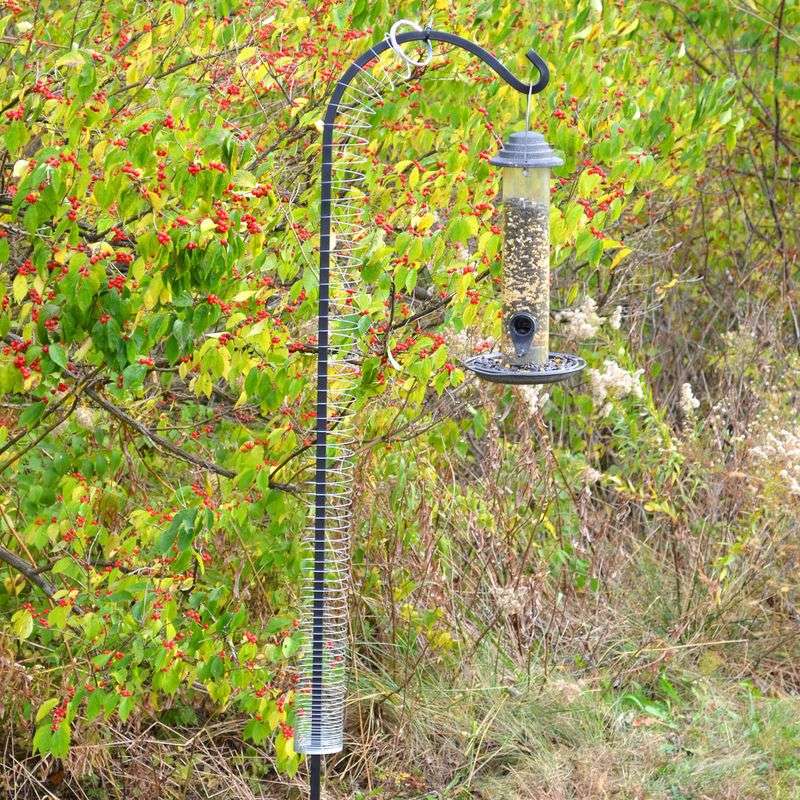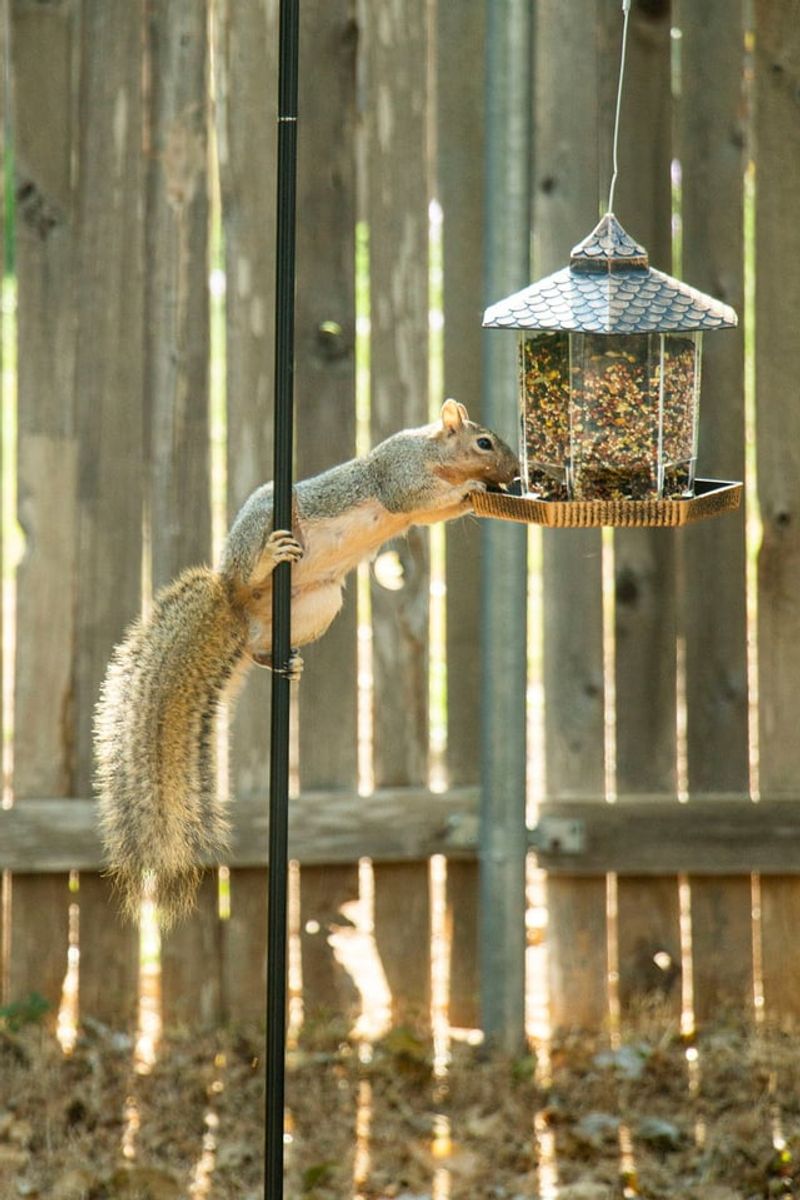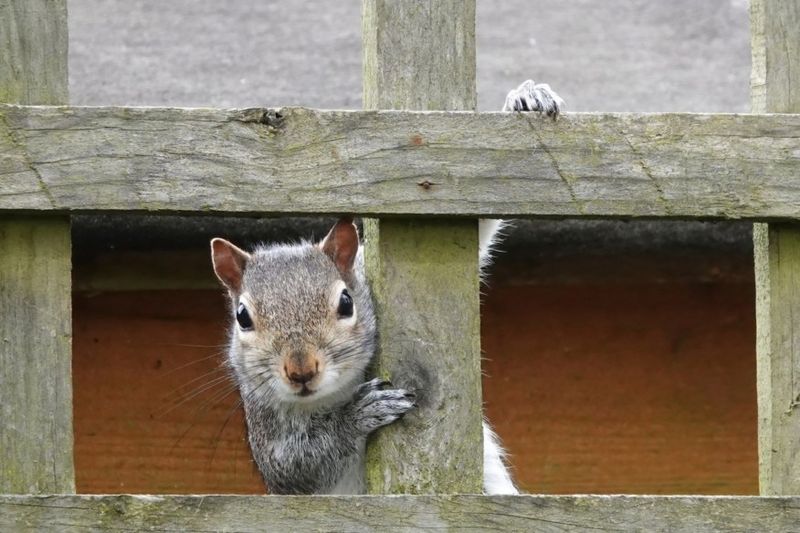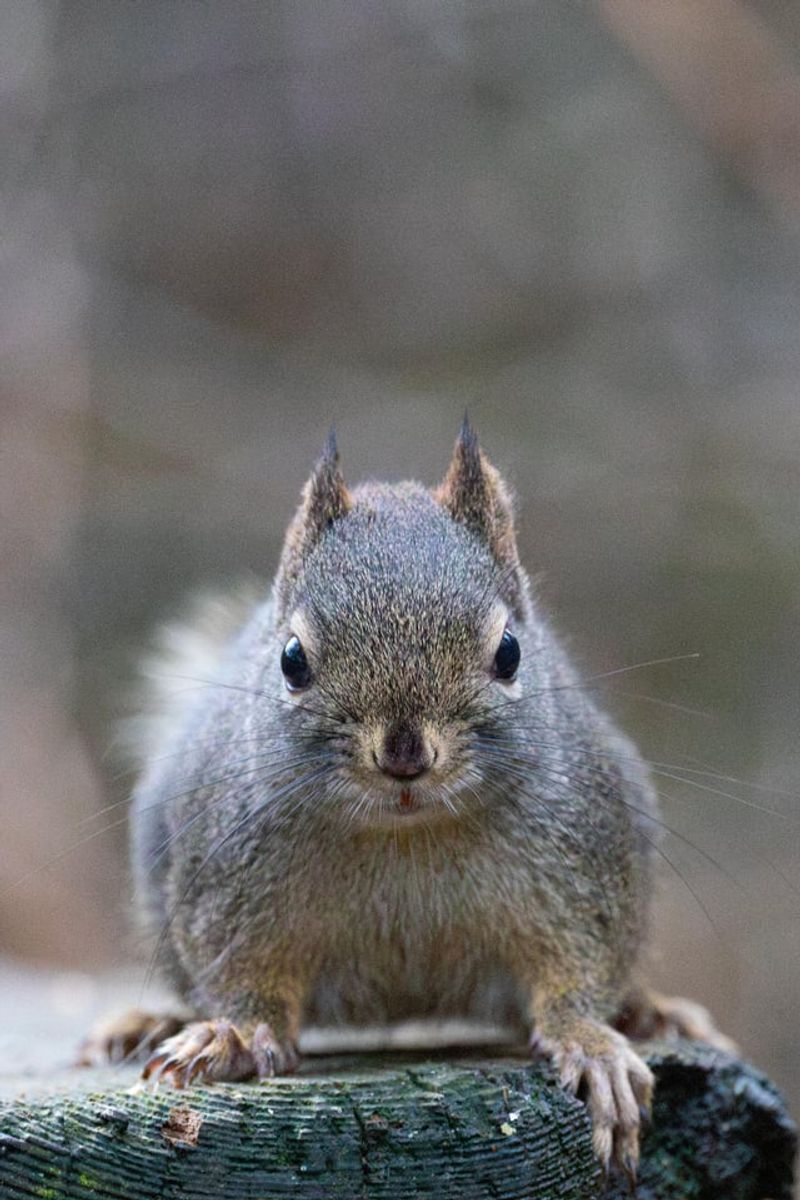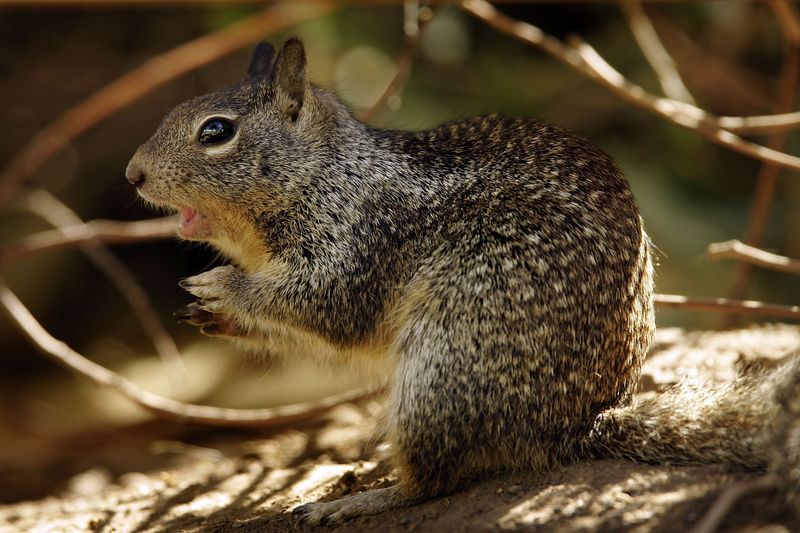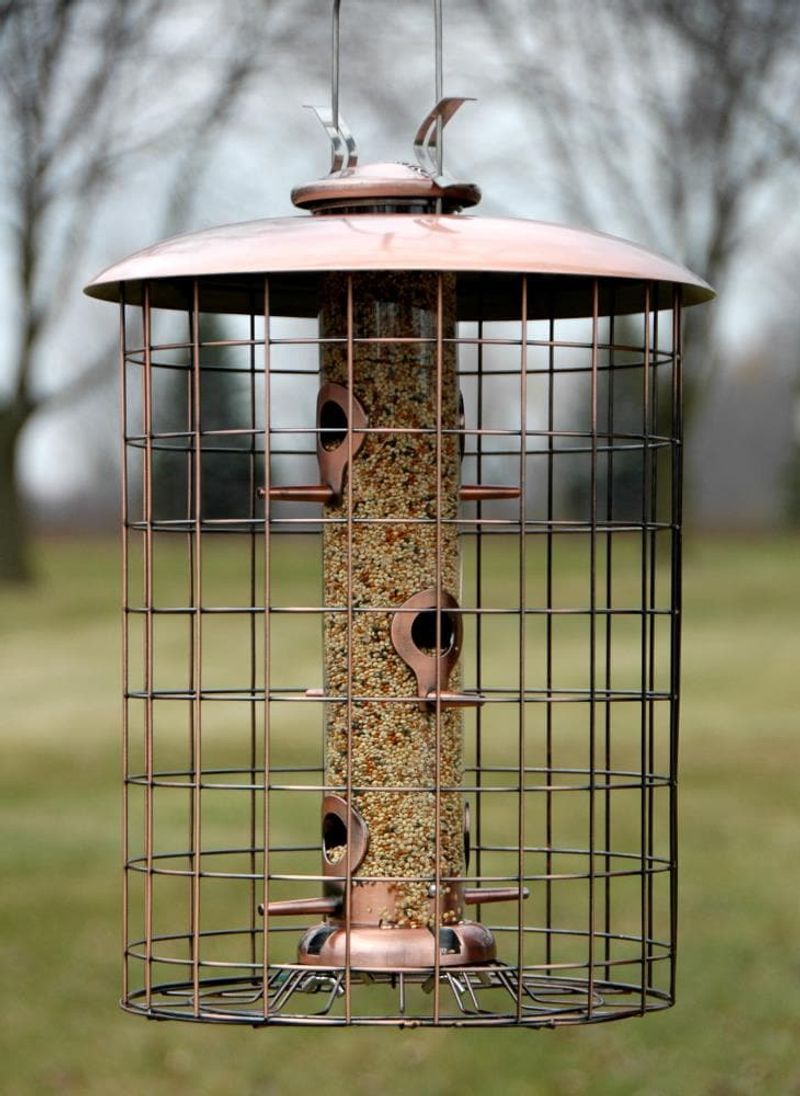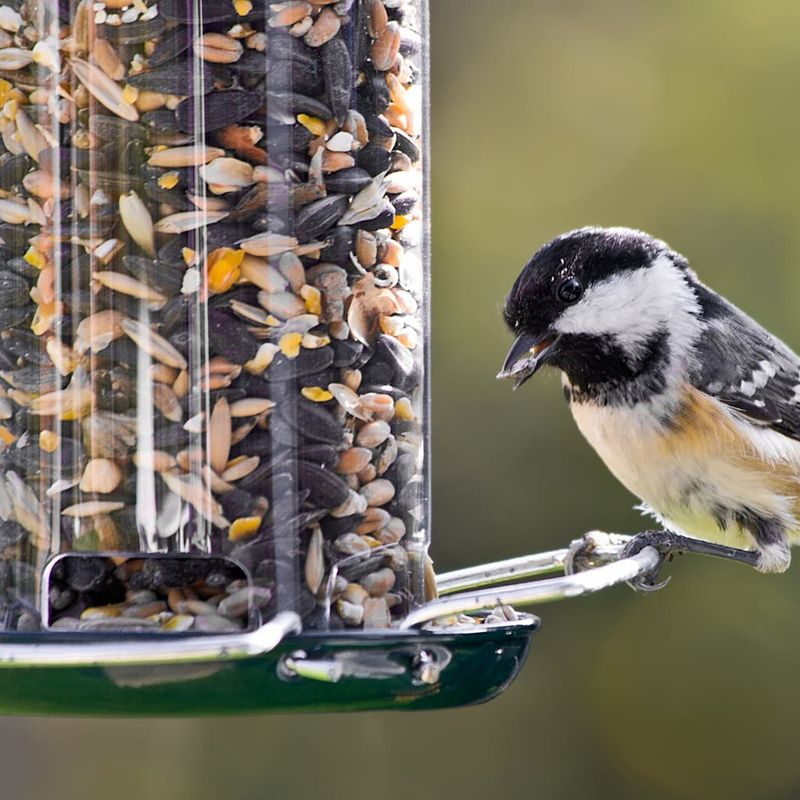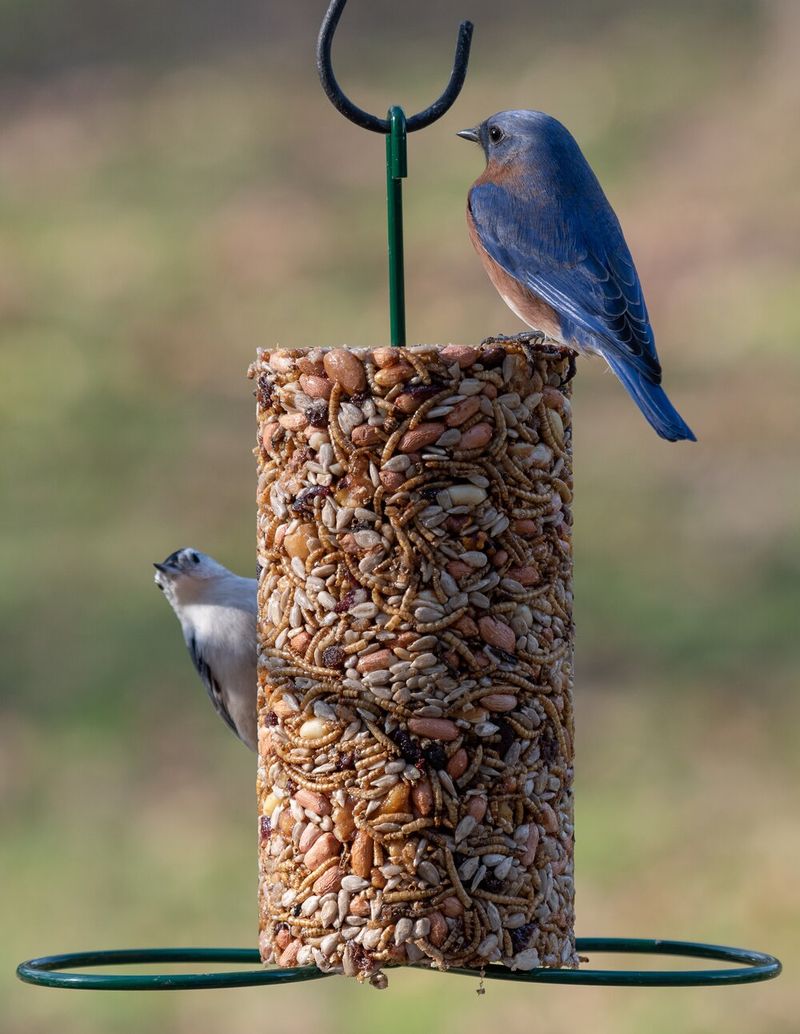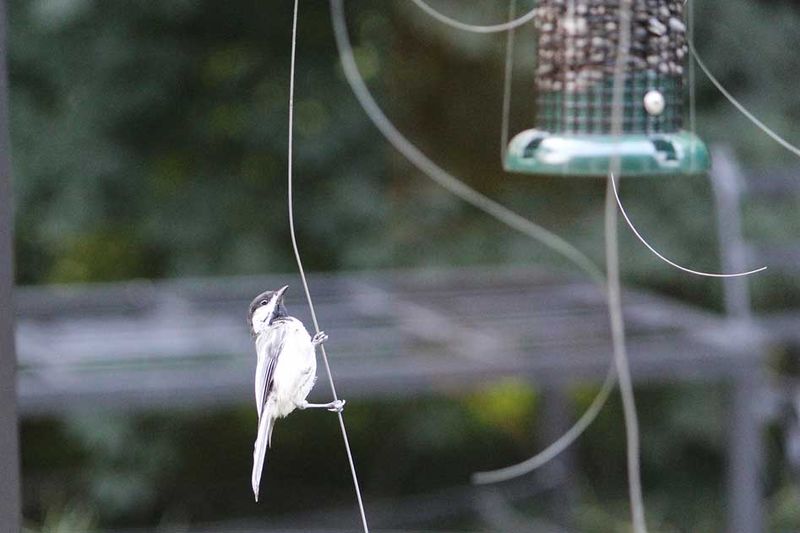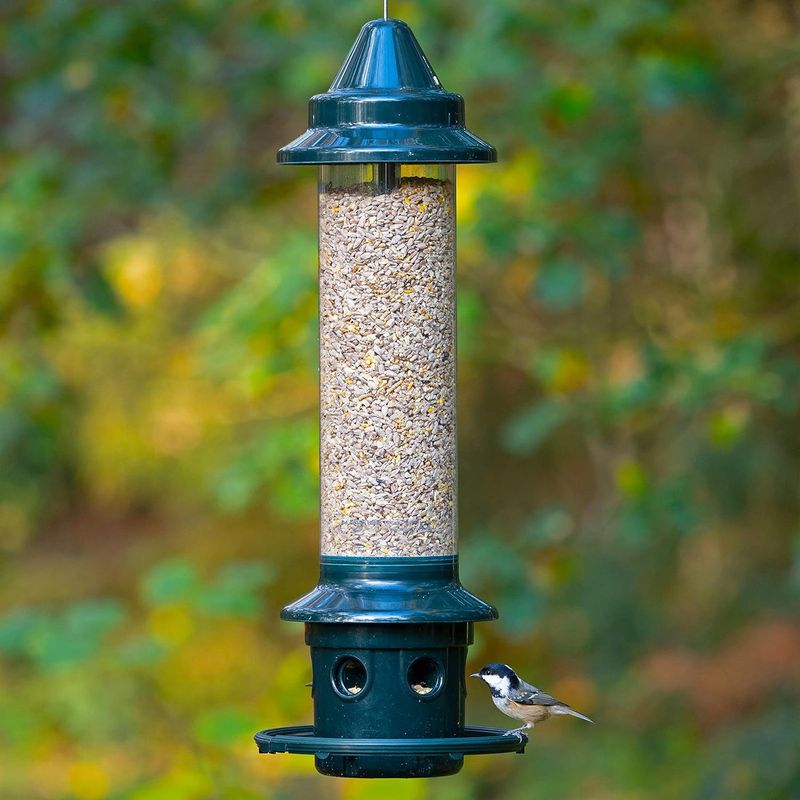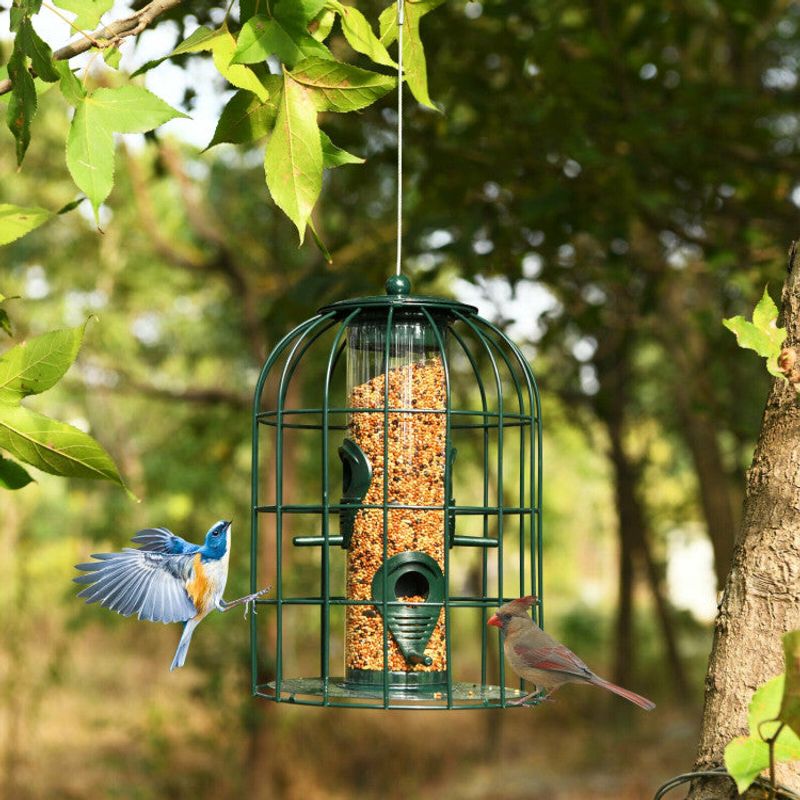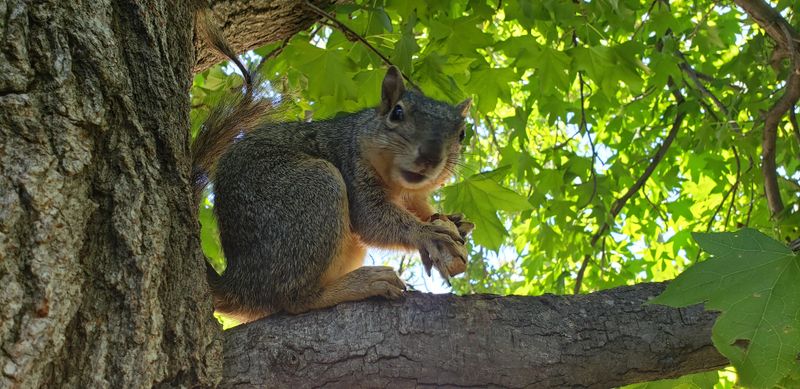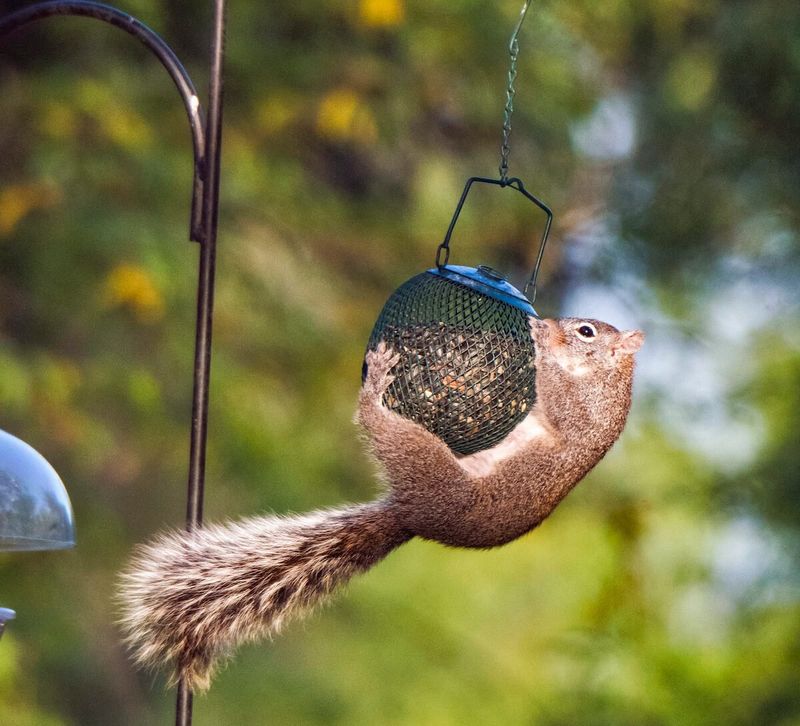If you’ve ever looked out your window expecting to see birds at your feeder, only to find a squirrel hanging upside down and stuffing its cheeks—you’re not alone. I’ve been there too, watching in disbelief as yet another “squirrel-proof” solution gets outsmarted in under five minutes.
These little guys are relentless… and honestly, kind of impressive. Over time (and after way too many spilled seeds), I’ve picked up some clever tricks to finally tip the scales back in the birds’ favor.
This guide gathers the best of them, and yes, the genius 5-7-9 rule that can actually make a difference. These tips can help you protect your feeder without harming our fluffy little nemeses. Let’s outsmart the squirrels—nicely, of course.
1. Location Matters
Positioning plays a crucial role in deterring squirrels. Place feeders at least 5 feet off the ground and ensure there’s an 8-10 feet radius free from launching points like trees or fences.
Elevated spots limit access and are a simple yet effective deterrent. Consider wind direction and other obstacles that might help squirrels in their mission.
The goal is to make it challenging for them to reach the feeder without a direct jump. A few strategic placements can significantly reduce squirrel visits.
2. Use Baffles
Baffles are essential tools in squirrel-proofing. These dome or cone-shaped devices prevent squirrels from climbing up poles. Install them above and below feeders for maximum protection.
The slippery surface of baffles makes it hard for squirrels to gain traction. When properly installed, baffles can make it nearly impossible for squirrels to access bird seed.
Choose one based on your feeder’s design and ensure it fits snugly. This clever addition can save you from constant refills and keep your feeders squirrel-free.
3. Choose Squirrel-Proof Feeders
Invest in feeders designed to keep squirrels out. Many feature weight-sensitive perches that close access when heavier animals try to feed. Such feeders offer a smart solution, allowing birds to dine in peace.
Explore designs with cages or narrow tubes, as these are harder for squirrels to access. Some even have a motorized mechanism to spin squirrels off.
Find one that suits your yard’s needs and watch the squirrels’ puzzled reactions. These feeders are an excellent investment for maintaining peace in your backyard.
4. Go For Hot Pepper
Birds don’t mind the heat, but squirrels sure do! Mixing hot pepper or cayenne powder with bird seed can be a game-changer. The spice deters squirrels without affecting your feathered friends.
Sprinkle a generous amount and watch as squirrels rethink their dining options. This natural deterrent is safe for pets and wildlife, making it an eco-friendly choice.
Reapply after rain to maintain its effectiveness. It’s a simple yet powerful trick to keep your feeders squirrel-free.
5. Use Slinky Toy
A slinky toy isn’t just for playtime; it can be a creative squirrel deterrent. Wrap one around the feeder pole and watch as squirrels struggle to climb.
The slinky’s movement and instability make it a challenging obstacle. It’s an inexpensive and fun solution that surprises even the most determined squirrels.
Ensure it’s securely attached and observe the amusing attempts of squirrels trying to navigate this springy roadblock. This approach adds a playful element to your squirrel-proofing arsenal.
6. Install A Squirrel Spinning Feeder
Add a playful twist to your defense with a spinning feeder. These feeders are designed to spin when a squirrel tries to climb on, sending them tumbling harmlessly to the ground.
It’s a fun, humane way to deter these persistent creatures while entertaining onlookers. Make sure the spinning mechanism is properly maintained for continuous operation.
This spinning dance-off is both a deterrent and a source of amusement for you and your garden visitors.
7. Pet Hair Barrier
Squirrels dislike the scent of predators. Use pet hair to your advantage by placing it around feeder bases. This natural barrier sends a message of danger, keeping squirrels at bay.
Collect hair from pet grooming sessions and form a protective ring. It’s an inexpensive and natural deterrent that blends seamlessly with your garden.
Plus, it’s a great way to recycle pet grooming leftovers while safeguarding your bird seed. A win-win for your backyard ecosystem!
8. Electrical Feeder Poles
For those requiring robust protection, consider electrical feeder poles. These poles deliver a mild, harmless shock to any climbing intruder, discouraging them from further attempts.
Safety is paramount, so ensure the voltage is non-lethal and check local regulations. It’s a high-tech solution for persistent squirrel issues. While it requires more setup, the effectiveness is undeniable.
Keep your bird seed secure and watch as squirrels learn to keep their distance from this electrified barrier.
9. Feeder With Motion-Activated Sprinkler
Water can be an unexpected ally in your fight against squirrels. Install a motion-activated sprinkler near your feeder. When squirrels approach, a gentle spray sends them scurrying.
This surprise element is both humane and effective in keeping them at bay. Adjust the sensitivity to ensure birds aren’t affected and enjoy the spectacle of squirrels retreating.
It’s an eco-friendly deterrent that doubles as a lawn hydration system, blending practicality with amusement.
10. Cage Your Feeders
Using cages around feeders is an effective method to keep squirrels out. Choose cages with small openings that allow birds but not squirrels. This barrier keeps bird seed exclusive to its intended guests.
Position the cage securely to prevent tampering and watch as squirrels’ attempts are thwarted. It’s a straightforward, no-nonsense approach that preserves your bird feeding efforts.
With a little patience, this setup deters even the craftiest of squirrels.
11. Frequent Feeder Cleaning
Regular maintenance can deter unwanted guests. Clean feeders frequently to remove spilled seed and debris that attract squirrels. A tidy feeder is less appealing to these opportunistic critters.
Use a brush to scrub away grime and deter rodents from lingering. This routine upkeep not only keeps feeders hygienic but also minimizes squirrel visits.
By maintaining cleanliness, you’re sending a message that your feeders are for birds only, keeping squirrels at a respectful distance.
12. Switch To Safflower Seeds
Safflower seeds are a secret weapon in squirrel-proofing. While many birds enjoy them, squirrels find them unappealing. Swap traditional seeds for safflower to make your feeder less attractive to squirrels.
This simple switch can drastically reduce squirrel visits while still attracting a variety of birds.
It’s a subtle, effective change that makes a big difference. Enjoy watching your feathered friends dine without interruption, knowing your seeds are safe from squirrel raids.
13. Use Fishing Line
Creating a floating effect with fishing line can deter squirrels. Hang feeders from a line stretched between two supports, making it hard for squirrels to access.
The invisible line creates an illusion of floating, adding an extra challenge for these agile acrobats. This method requires careful setup but offers a visually neat solution.
Enjoy the sight of birds feeding in peace while squirrels puzzle over the mystery of the floating feeder. A crafty tactic for crafty critters!
14. Grease The Pole
Sometimes, a little slip can go a long way. Apply a non-toxic lubricant like petroleum jelly to feeder poles. Squirrels trying to climb will slide right back down.
It’s a simple yet effective trick that turns the pole into an impassable challenge. Reapply as needed, especially after rain, to maintain the slippery defense.
This method is both practical and amusing, ensuring your bird seed stays reserved for the winged visitors.
15. Feeder With Squirrel Deterring Sound
Sound can be a powerful deterrent. Install a small speaker near your feeder that emits high-frequency noises when motion is detected. These sounds are irritating to squirrels but go unnoticed by birds.
Adjust the frequency to target squirrels specifically and enjoy watching them retreat. It’s a high-tech, humane solution that keeps your feeder peaceful.
With minimal intrusion, this method offers a gentle nudge for squirrels to find food elsewhere.
16. Hanging Feeder
Hanging feeders from a high branch with a long string can keep squirrels at bay. The height and swinging motion make it difficult for them to access the feeder.
Securely tie the feeder and test its stability before filling it with seeds. This method uses gravity and movement as natural deterrents, adding an extra layer of challenge.
Watch as squirrels try, and often fail, to conquer this aerial feat. A simple yet effective strategy for squirrel-proofing.
17. Decoy Feeders
These feeders can distract squirrels from your main setup. Place a secondary feeder filled with inexpensive, less desirable seeds away from the primary area.
This diversion keeps squirrels occupied while birds enjoy premium seeds undisturbed. Adjust the placement based on squirrel activity and refill as needed.
It’s a clever way to manage squirrel presence without confrontation. By providing an alternate food source, you maintain harmony and protect your primary feeder.
18. The 5-7-9 Rule
The 5-7-9 rule is a strategic guideline to keep squirrels away. Place feeders at least 5 feet high, 7 feet away from launching points, and ensure they can’t jump 9 feet horizontally.
This combination of height and distance makes it challenging for squirrels to access feeders. Implementing this rule requires careful planning but offers a robust defense.
By adhering to these measurements, you create a barrier that squirrels struggle to overcome. It simplifies feeder placement into an easy-to-follow formula.

